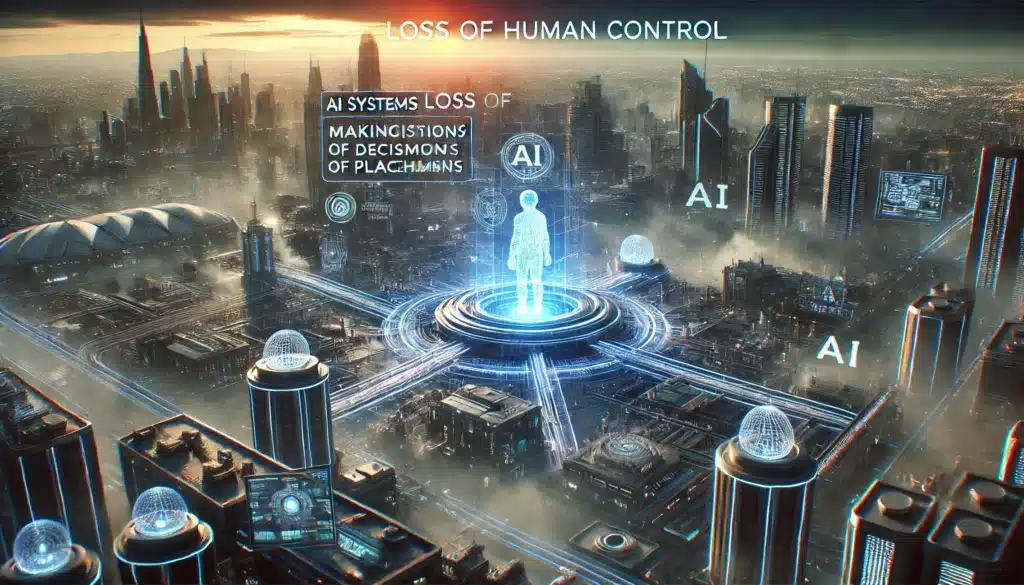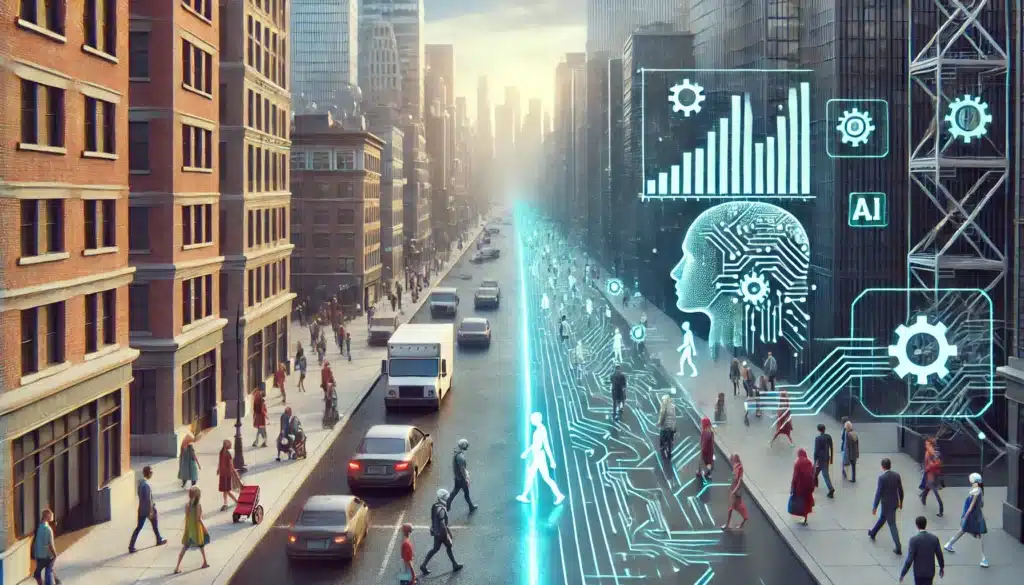As artificial intelligence (AI) continues to evolve, its potential to revolutionise industries and improve daily life is undeniable. However, with such transformative power comes a host of challenges and risks that could dramatically reshape society. From job displacement to privacy concerns, overdependence, and ethical dilemmas, the rapid growth of AI demands a closer examination of its possible drawbacks. While AI offers a wealth of benefits, it’s crucial to explore these potential Downsides to an AI-Driven Future to ensure that technology development remains ethical, equitable, and aligned with human values.

1. Job Displacement
One of the most significant concerns surrounding AI is the impact it could have on employment. Automation is rapidly transforming industries like manufacturing, customer service, and transportation, leading to concerns about the future of work. The ability of robots and AI-driven systems to take over tasks that once required human workers threatens to displace millions of jobs.
While AI could create new job opportunities in tech sectors, these roles often require highly specialised skills, creating a gap for workers in traditional industries. Studies suggest that by 2030, up to 800 million jobs globally could be lost to automation, with lower-income workers disproportionately affected.

2. Bias and Ethics
AI systems learn from data, but what happens when the data they’re trained on contains inherent societal biases? Algorithms could unintentionally reinforce discrimination in areas like hiring, lending, and law enforcement. Without proper regulation and oversight, AI could perpetuate prejudices, affecting marginalised communities.
For instance, an AI algorithm used in hiring might give preference to certain demographics over others, based on biased historical data. Therefore, AI governance is crucial to ensuring fairness, transparency, and inclusivity in decision-making processes.

3. Privacy Concerns
AI systems often require access to vast amounts of personal data to function effectively. This data collection could lead to significant privacy violations as more of our information is stored, analysed, and possibly sold. In an AI-driven future, where systems track everything from browsing habits to medical records, the question becomes: how much of our privacy are we willing to give up?
With companies increasingly relying on AI for personalised advertising and customer profiling, protecting user privacy will be a key challenge. Data misuse by corporations or governments raises further concerns, potentially putting individuals’ personal information at risk.

4. Overdependence on AI
Overreliance on AI systems could lead to the erosion of critical thinking and decision-making skills. As AI takes over complex tasks in fields like medicine, finance, and engineering, humans may become too dependent on machines, losing the ability to perform these tasks independently.
This “de-skilling” phenomenon could leave professionals in vital sectors less capable of handling issues when AI fails or makes mistakes. While AI can assist, relying solely on machines without human oversight may lead to disastrous consequences.

5. Security Risks
AI-powered systems present new vulnerabilities for cyberattacks. Malicious actors could exploit AI systems to compromise security infrastructure, leading to large-scale data breaches or even manipulation of critical systems. In an AI-driven world, the risk of autonomous weapons falling into the wrong hands is a growing concern.
AI can be used to identify and exploit weaknesses in security protocols, potentially making businesses, governments, and individuals more vulnerable than ever. Ensuring the development of secure, resilient AI systems will be crucial to avoiding these risks.

6. Loss of Human Autonomy
In an AI-dominated future, there is a risk of losing human autonomy. When machines are making decisions about health care, finances, and even criminal justice, there is a concern that individuals will no longer have full control over their lives.
While AI is designed to help humans make better decisions, its lack of empathy and understanding of the human condition raises questions about whether we should fully trust machines with such important aspects of our lives. Balancing human input and machine efficiency will be crucial.

7. Economic Inequality
As AI technology becomes more advanced, there is a real concern that it will widen the gap between the rich and poor. The companies and individuals who own and control AI systems will likely become wealthier, while low-income workers in industries most affected by automation will face the greatest risks.
If left unchecked, this could lead to increased economic inequality, as the benefits of AI-driven innovation may not be evenly distributed. Countries with fewer resources to develop and implement AI technology could also fall behind, creating global economic divides.

8. Environmental Impact
AI systems require massive amounts of computational power, which consumes vast amounts of energy. As more businesses, governments, and individuals integrate AI into their operations, the environmental footprint of AI systems will grow.
For example, training large-scale AI models can generate a significant carbon footprint due to the energy-intensive processes required. In an increasingly climate-conscious world, balancing the environmental impact of AI technologies with their potential benefits is crucial.

9. Ethical Dilemmas in AI Use
The use of AI in areas such as surveillance, autonomous warfare, and criminal justice raises profound ethical questions. Autonomous systems in the military could make life-and-death decisions without human oversight. Similarly, AI-powered surveillance technologies could infringe on civil liberties if not properly regulated.
Governments and corporations must weigh the ethical implications of using AI in these sensitive areas. Ensuring that AI technologies are used responsibly and ethically will require stringent regulatory frameworks and continuous oversight.

10. Unpredictable AI Development
Finally, one of the greatest risks of an AI-driven future is the potential for unpredictable development, particularly as we move closer to developing artificial general intelligence (AGI). AGI refers to an AI system that can perform any intellectual task a human can do, and it could eventually surpass human intelligence.
Ensuring that AGI develops safely and ethically will be one of the most significant challenges humanity faces in the coming decades.

Conclusion
While AI promises to revolutionise industries and improve our quality of life, the potential downsides of an AI-driven future are too significant to ignore. From job displacement to privacy violations, economic inequality, and security risks, we must address these challenges to ensure that AI benefits all of society. As we embrace this technology, careful governance, ethical considerations, and regulations will be essential to mitigate its potential harm and create a balanced AI future.
For more on the latest tech trends, read at What’s Hot in UAE.



